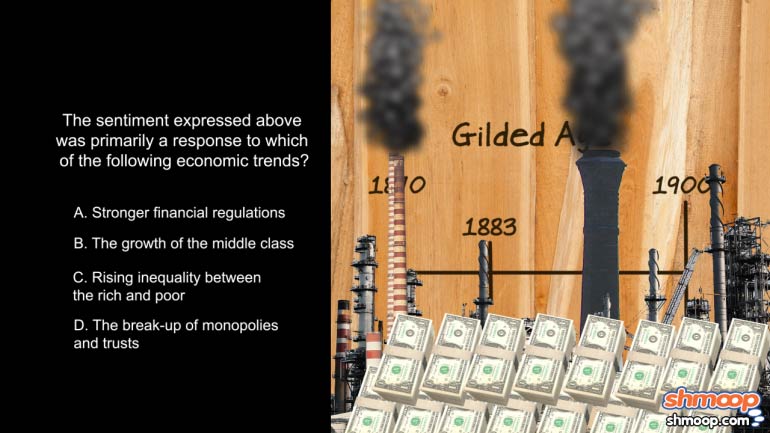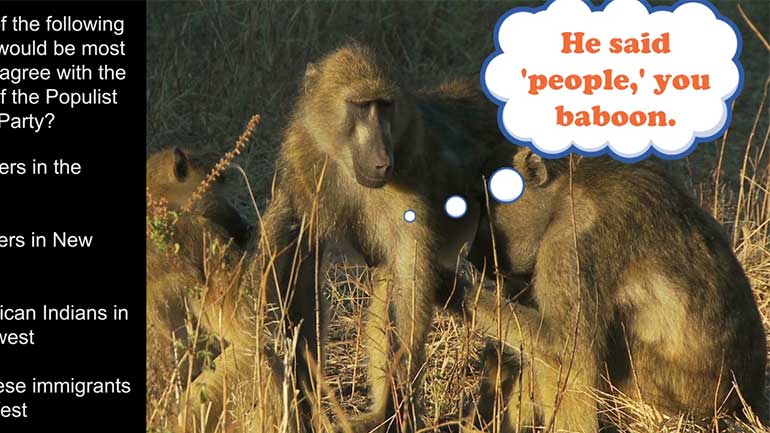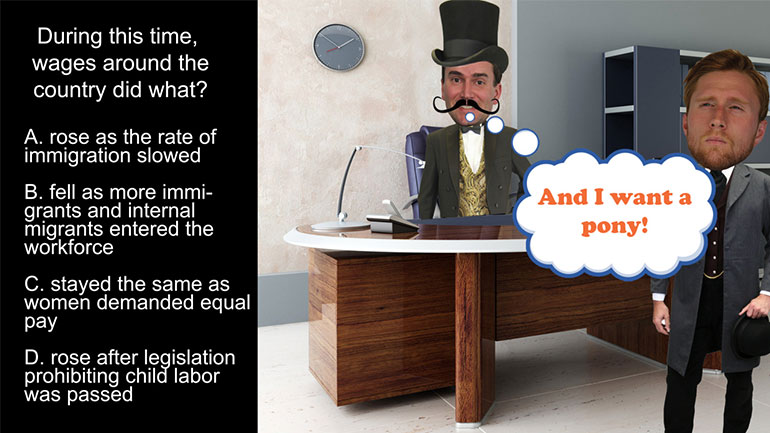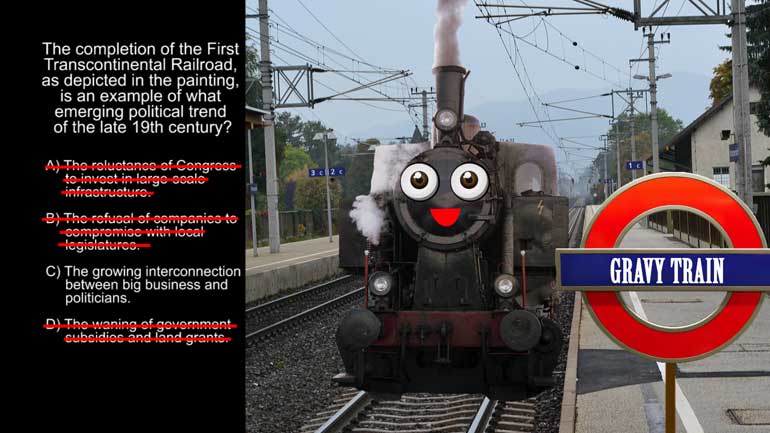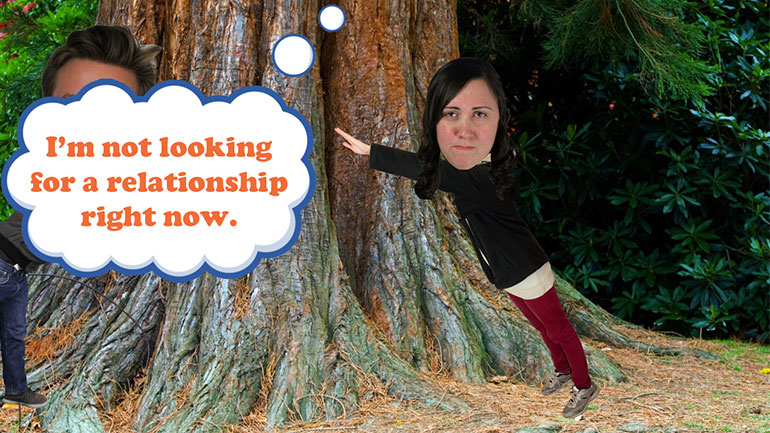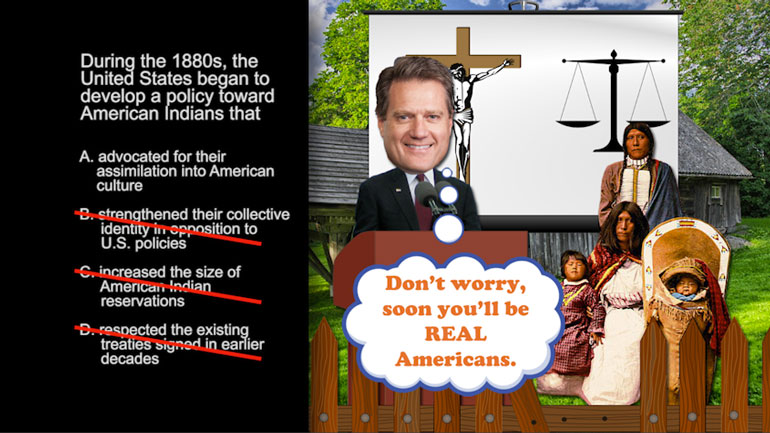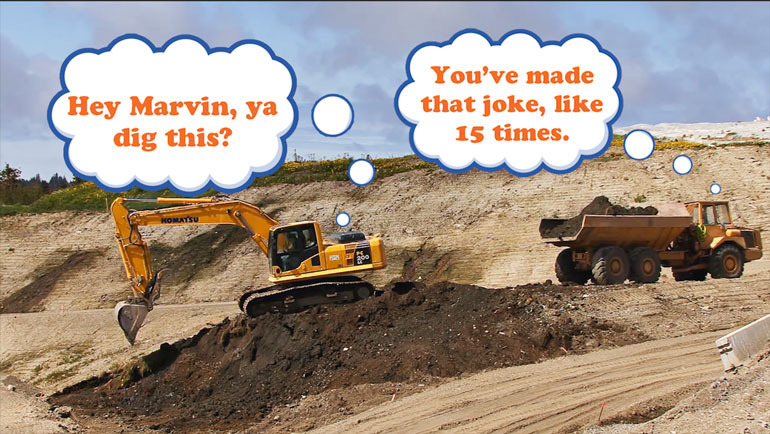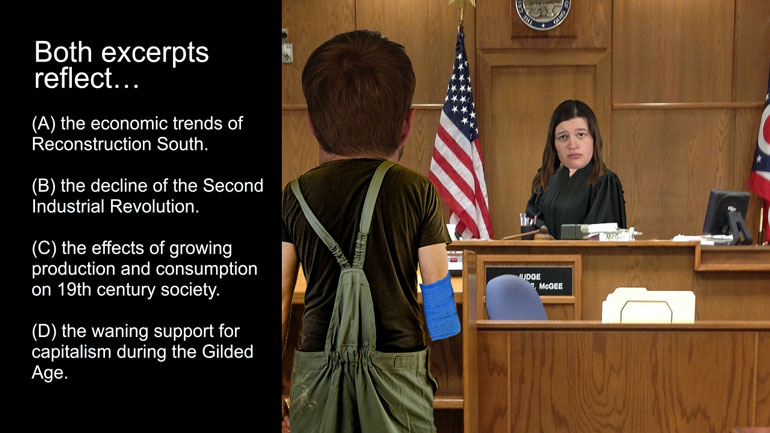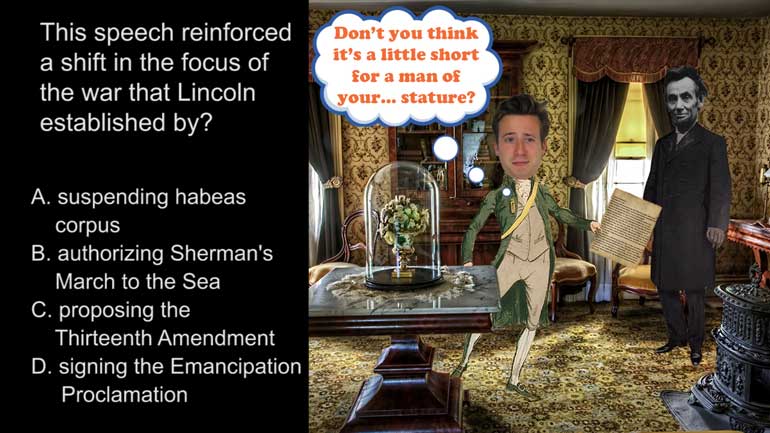ShmoopTube
Where Monty Python meets your 10th grade teacher.
Search Thousands of Shmoop Videos
Period 6: 1865-1898 Videos 11 videos
AP U.S. History 1.1 Period 6: 1865-1898. The sentiment expressed above was primarily a response to which of the following economic trends?
How did the wealthy justify their status and privilege? Other than the customary way of having large gold statues built in their likeness with sign...
AP U.S. History 1.3 Period 6: 1865-1898. Which of the following groups would be most likely to agree with the goals of the Populist Party?
AP U.S. History 1.3 Period 6: 1865-1898 223 Views
Share It!
Description:
AP U.S. History 1.3 Period 6: 1865-1898. Which of the following groups would be most likely to agree with the goals of the Populist Party?
Transcript
- 00:00
[ musical flourish ]
- 00:03
And here's your Shmoop du jour, brought to you by the Populist Party,
- 00:07
the party for average kids by average kids.
- 00:11
First up, the excerpt.
- 00:12
[ mumbles ]
Full Transcript
- 00:15
[ mumbling continues ]
- 00:18
All right, and now the question:
- 00:20
Which of the following groups would be most likely to
- 00:23
agree with the goals of the Populist Party?
- 00:26
And here are your potential answers.
- 00:28
[ mumbles ] All right.
- 00:31
So what exactly was the Populist Party?
- 00:34
Well, in the excerpt we see they advocated that
- 00:36
government shall be exercised only for the mutual benefit
- 00:40
of all people,
- 00:41
and that the public good is paramount to private interest.
- 00:44
So let's keep that mission in mind as we look to the answers.
- 00:47
Would the Populist Party have appealed to B -
- 00:50
bankers in New England?
- 00:52
Well, that second part of the excerpt, "the public good
- 00:55
is paramount to private interest" -
- 00:57
that means the Populists were against the rise of corporate power.
- 01:01
So bankers would not have been down with this particular party.
- 01:04
That eliminates B.
- 01:05
Did the Populist Party appeal to C - American Indians in the Midwest?
- 01:09
Well, actually, the Populist Party focused primarily on the average Joes,
- 01:13
which means it had to disregard minority groups
- 01:16
with specialized interests, and that's where the Indians came from, so...
- 01:19
forget both C, well, and D.
- 01:22
Which means that the Populist Party would have most appealed to A -
- 01:25
farmers in the South.
- 01:27
It wasn't just bankers that the Populists
- 01:29
hated, it was also the large-scale agriculture
- 01:33
taking over the region, eliminating the
- 01:35
single-family farms that had been in place for generations.
- 01:38
So A is our winner. With this "average Joe" message,
- 01:41
the Populist Party had some big wins
- 01:43
from 1892 to 1896,
- 01:45
partnering with the Democrats
- 01:47
to elect governors across the country.
- 01:49
Looks like those farmers really were party animals.
- 01:53
[ pig snorting ]
Related Videos
AP U.S. History Exam 2.45. The journey shown on the map was an example of...what?
AP U.S. History Exam 2.26. This speech reinforced a shift in the focus of the war that Lincoln established by...what?
What did the Spanish messengers bring with them to North America? Hint: you probably wouldn't be thrilled to get this for your next birthday.
AP U.S. History Diagnostic 24. How did the United States choose containment over the National Security Council Report in Latin America?
AP U.S. History Exam 2.25. In writing the Gettysburg Address, Lincoln was still working to win over Northern voters who believed that...what?
